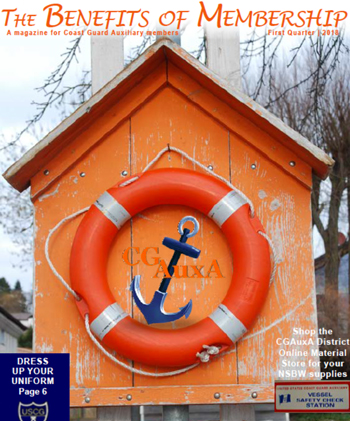Publications
Cruising.
Boat work.
Training.
Working on skills.
Regattas.
Service.
Awards and advancement.
/Uploads_wowII/113-12-01/_Council_Flagship_Slideshow_2022_2.pptx.pdf
--------------- Below is 2022 and prior. --------------------------------------
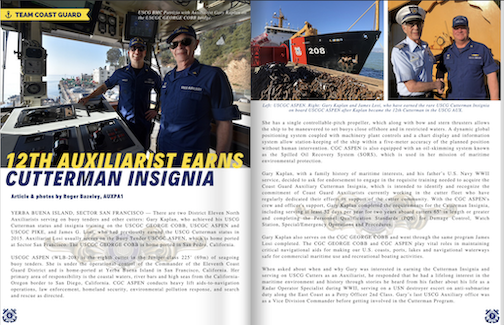
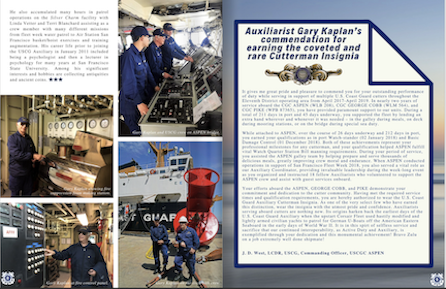
|
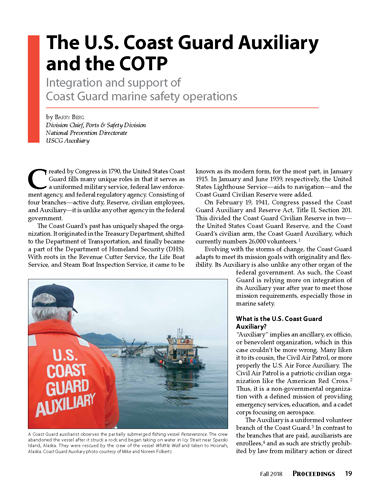 |
| Click on the page above to open the article. |

A Beacon for Recruiting the Next Generation of USCG Auxiliarists—
Shining Bright! The Semper Paratus Club at City College of San Francisco.
The following is a conversation conducted via email on Friday, February 2, 2018 between Auxiliarist Robert M. Clark, Jr., the FSO-DV/SO-DV for District 11 Northern Region, Division 12, Flotilla 01; and Auxiliarist JC Caianiello, FSO-PB for Flotilla 12-01.
Auxiliarist Caianiello: How long have you been in the Auxiliary and what was it that motivated you to join?
Auxiliarist Clark: I’ve been an Auxiliarist since February 2013. Sparked by my interested in Search & Rescue (SAR), I heard that Auxiliarists receive the same training as the Gold Side, so that was the impetus for joining. Since then, I’ve found that there are many more opportunities to explore and become involved in— coxswain and boat crew, watchstander, vessel examiner, and air observer—to name a few.
Auxiliarist Caianiello: Would you tell our readers about the Auxiliary club you started?
Auxiliarist Clark: The club I started at City College of San Francisco (CCSF) is called “The Semper Paratus Club of CCSF” and has been operating since March 2017. On our roster, we have over 70 members, many of whom consistently attend meetings and participate in Club activities. As a faculty member at CCSF, starting the Club on campus seemed a logical place to start.
As the Diversity Officer for 12-01, I want to improve the diversity of the Auxiliary by creating a venue where students of all ages and backgrounds can interface with the Auxiliary, participate in its training programs, and become involved in something much greater and more meaningful—that is, public and community service. Opportunities to serve abound in the Auxiliary and that is something young people need to learn about.
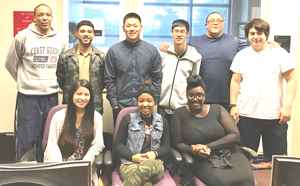 |
Auxiliarist Caianiello: What is the Club’s Charter, Vision, and/or Mission?
Auxiliarist Clark: The Club’s mission is to provide community service and volunteer opportunities for CCSF students throughout the Bay Area in collaboration with the U.S. Coast Guard Auxiliary and the U.S. Coast Guard. Even students who are not currently considering membership in the Auxiliary or the Coast Guard should become more familiar with the opportunities that are out there and who may decide to become involved at later time.
Since the Club’s inception, over ten members are in the process of becoming Auxiliarists and one member is contemplating joining the U.S. Coast Guard. As an added benefit, once Club members become Auxiliarists, they can apply to the USCG Auxiliary University Program (AUP) to prepare for a career in public service.
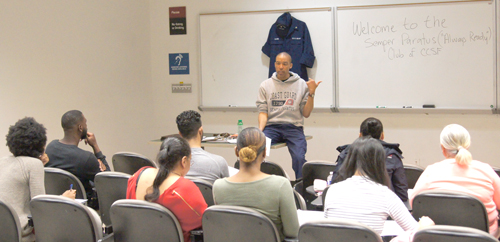 |
Auxiliarist Caianiello: Can you tell us a bit about how the club operates?
Auxiliarist Clark: The Club is run exclusively by student officers. Meetings are held once a month for the general membership. I personally meet with Club officers twice a month to plan the semester Club calendar and to address any issues or concerns. To date, Club members have participated in many community service activities, both on campus and around the SF Bay Area.
Auxiliarist Caianiello: What accomplishments have Club members achieved to date?
Auxiliarist Clark: Members participate in coordinated events by the American Red Cross, St. Jude Children’s Research Hospital, the USCG Auxiliary, and USCG that focus on water safety, disaster preparedness, first aid, public education, and community involvement.
During the Spring semester of 2017, four Club members successfully completed the “About Boating Safety” class and officially became Auxiliarists within Flotilla 12-01. This past Summer 2017, nine members completed the required FEMA certifications for the Auxiliary and are looking forward to more training opportunities.
In addition, the Club offers and promotes workshops and trainings on the CCSF campus and in Bay Area communities during the academic year. This year, the Club plans on collaborating more with the American Red Cross and St. Jude Children’s Hospital in terms of disaster preparedness and community service, respectively.
Auxiliarist Caianiello: What final thoughts do you have for our readers?
Auxiliarist Clark: It is my hope that the success of the “Semper Paratus” Club of CCSF will serve as a template for other Bay Area colleges and Auxiliary Flotillas to increase the diversity pool of potential recruits for the USCG Auxiliary and the U.S. Coast Guard.
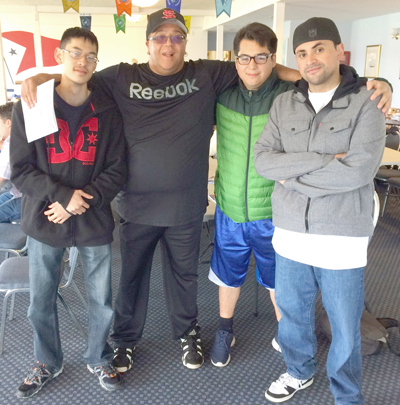 |
